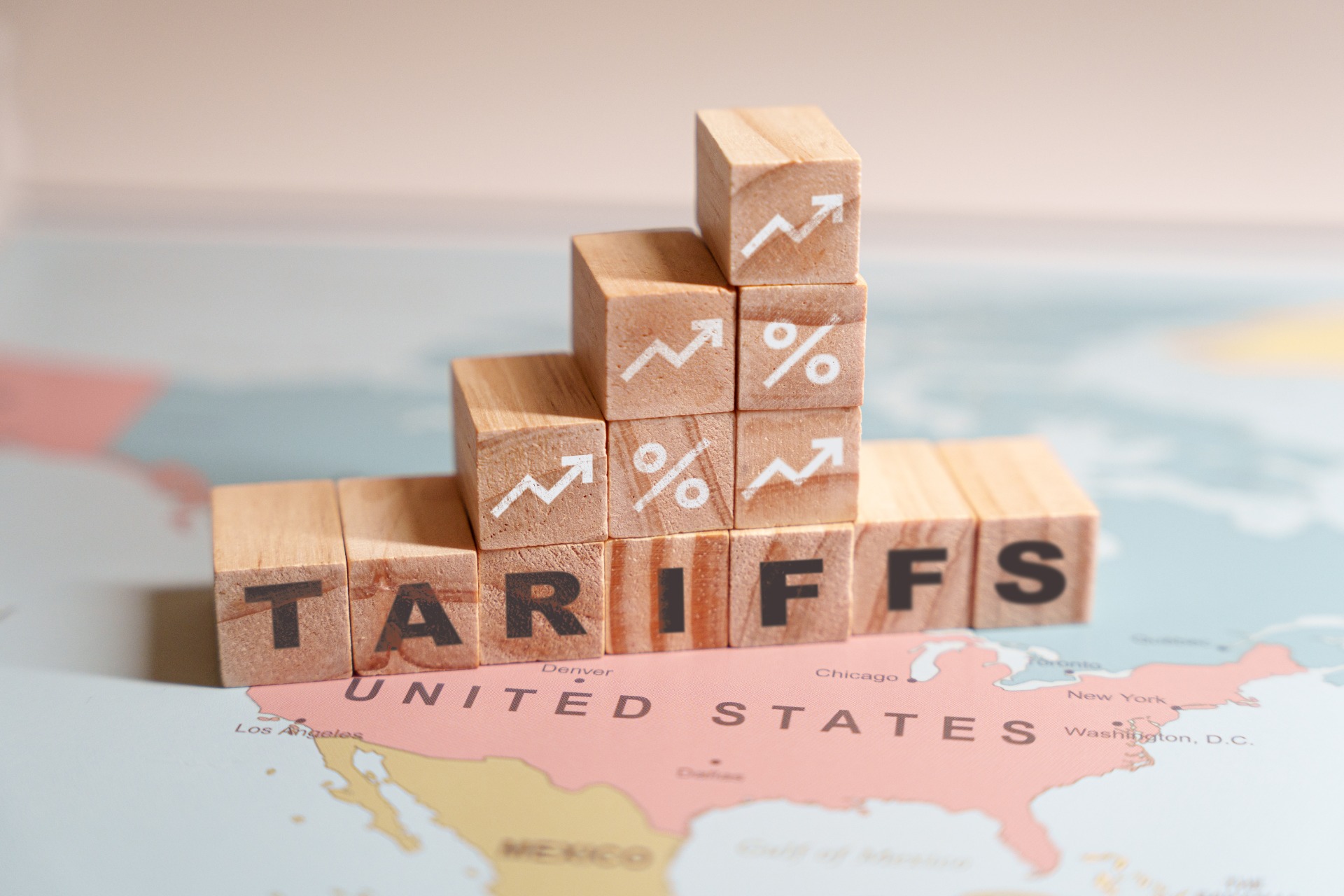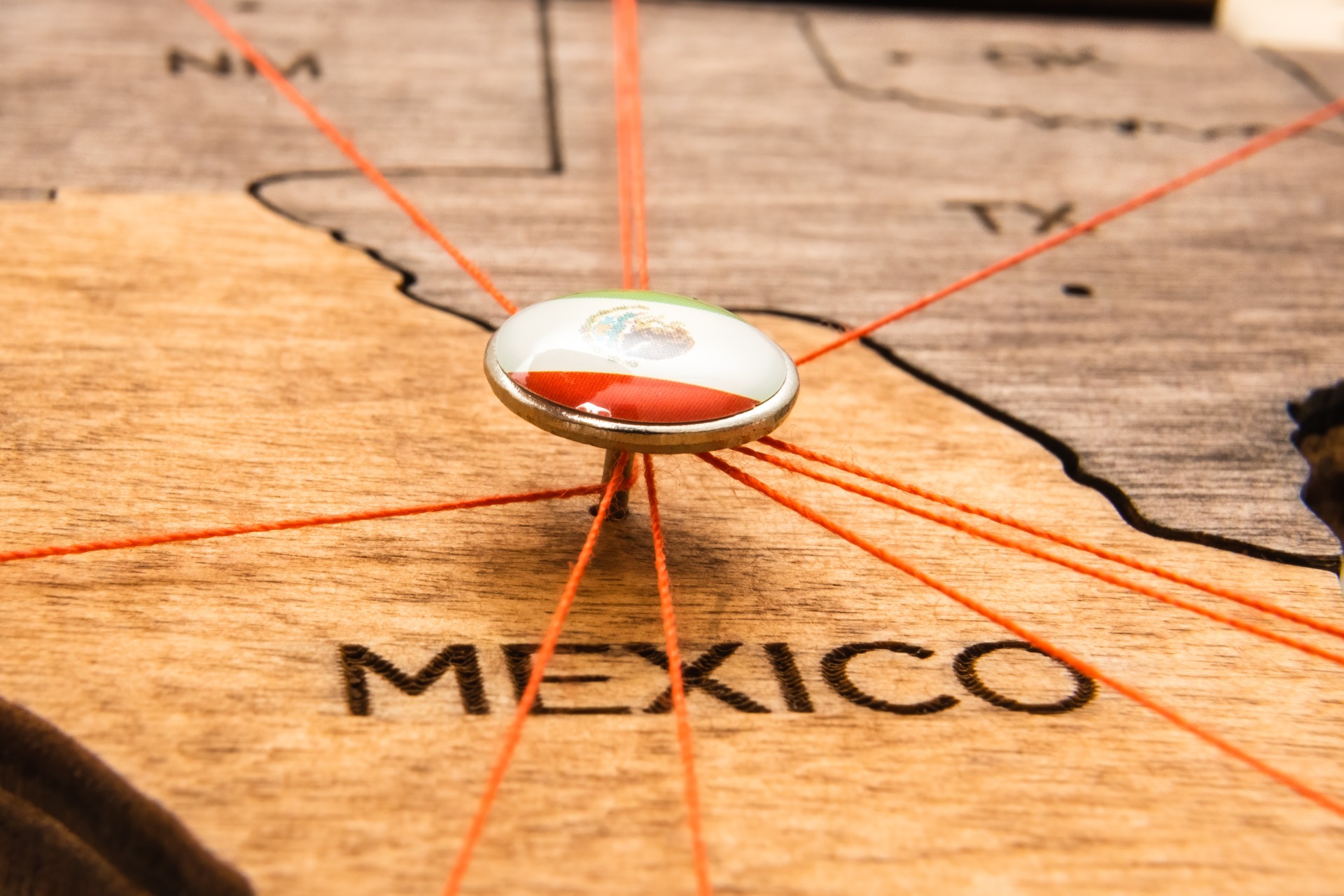
Tariffs in Mexico: Impact on Nearshoring and Trade
In early 2025, the topic of tariffs in Mexico captured the attention of business leaders, economists, and citizens in both Mexico and the United States. The possibility of a 25% tariff on Mexico, proposed by U.S. President Donald Trump, has caused uncertainty in markets and trade relations between the two countries.
Although this measure has not yet been implemented, its mention has led to debate over its economic impact and the investment strategies Mexico may adopt in nearshoring and international trade. In this post, we’ll explore how these tariffs could shift trade dynamics, even as Mexico remains a key industrial hub.
What Is The Policy Context Behind the Proposed 25% Tariff on Mexican Imports?
During his 2025 inauguration, U.S. President Donald Trump reaffirmed his commitment to revising U.S. trade policy, stating:
- “I will immediately begin the overhaul of our trade system to protect American workers and families.”
This reflects the continuation of his America First approach, where trade instruments like tariffs play a central role in protecting U.S. industries and generating policy reactions from international partners.
A Look Back: Use of Tariffs During Trump’s First Term
In his first term, President Trump introduced a series of tariff measures that set the tone for future policy:
- A 25% tariff on steel and 10% on aluminum imports in 2018.
- Initially, countries like Mexico and Canada were exempted, but those exemptions were later lifted.
- These actions led to a period of bilateral negotiations and reciprocal measures, particularly within the USMCA framework that replaced NAFTA.
2025 Developments: A New Round of Trade Measures
In early 2025, the U.S. administration raised trade tensions by announcing a new wave of tariffs:
- On March 4, a 25% tariff on imports from Mexico and Canada was implemented.
- On March 6, a pause was announced on goods under USMCA, moving the effective date to April 2.
- On March 12, tariffs on steel and aluminum went into effect for several countries. In response, Canada announced countermeasures targeting U.S. exports.
- Mexico signaled it was reviewing options, with a decision on reciprocal actions expected by April.
The 25% Tariff Mexico: Why It Matters for US Trade?
A proposed 25% tariff on Mexican goods would raise the costs for US businesses that depend on cross-border trade. As a result, key industries such as automotive, manufacturing, agriculture, and electronics would deal with the worst of these additional costs:
- Mexico import tariffs could disrupt just-in-time supply chains, especially for U.S. companies in Mexico, increasing pressure on operational budgets and delivery timelines.
- Small and medium-sized businesses may struggle to absorb the extra costs, potentially driving up prices for U.S. consumers.
- Some US companies could explore alternative sourcing options, but Mexico’s proximity, skilled labor, and trade agreements still make it a strategic choice.
What Do US-Mexico Tariffs Mean for Trade and Business?
Mexico and the US share one of the largest trading relationships in the world, with billions of dollars in goods moving between them every day. The proposed tariffs in Mexico may disrupt this flow:
- Impact US-based manufacturers that rely on Mexican components.
- Strain diplomatic relations, especially as Mexican President Claudia Sheinbaum negotiates talks with Trump.
What Does It Mean for U.S. Businesses?
For US companies in Mexico, the proposed Mexico import tariffs represent a serious challenge. Many firms shifted production to Mexico for its lower labor costs and logistical advantages, which are now at risk due to added expenses. Some industries most exposed include:
1. Automotive
Car manufacturers depend on robust cross-border supply chains. Mexico’s automotive exports earned $193.9 billion in 2023, accounting for 31.4% of the country’s total exports, according to BCG. Of that, $166.3 billion — 85.7% — were shipped to the United States, showing just how deeply integrated both economies are in this sector.
2. Consumer electronics
One key indicator of this trend is the $2.9 billion invested in industrial parks in northern Mexico, according to Supply Chain Brain, where many electronics manufacturing facilities are being established.
Additionally, Mexico replaced China as the U.S.’s top trading partner, accounting for 15.4% of all U.S. imports, according to Business Insider, a shift largely attributed to increased demand for high-tech manufacturing close to home.
What Was the Mexican President’s Response to Trump on Trade and Migration?
Recently, Claudia Sheinbaum and Donald Trump discussed migration and trade, indicating a shift in diplomatic relations between the two nations. Trump has consistently pushed for tougher policies on Mexico, while Sheinbaum plans to maintain cooperation and economic stability.
At the same time, the Mexican President responded to Trump’s tariff threats through a measured and diplomatic approach, reaffirming Mexico’s long-standing commitment to free trade and bilateral dialogue.
Some key points emphasized by the Mexican leadership include:
- Mexico is the U.S.’s top trading partner, and new tariffs would harm both economies.
- U.S. companies in Mexico benefit from nearshoring, so aggressive trade measures would be counterproductive.
- Collaboration, not confrontation, is essential for solving migration and economic issues.
- The administration is committed to working with the U.S. to find balanced trade solutions.
- Mexican exporters are actively exploring ways to reduce the potential impact of tariffs.
Why Does Mexico Still Have the Nearshoring Advantage?
One of the strongest challenges to tariff fears is the growing nearshoring market in Mexico. Over the past three years, a group of companies—primarily American and Canadian—have moved or expanded operations in Mexico to:
- Shorten their supply chains.
- Reduce dependency on Asia.
- Benefit from the United States-Mexico-Canada Agreement (USMCA) trade protections.
According to Mexico Business, in recent years, northern Mexico and the Bajío region have become magnets for foreign investment, drawing in more than 80% of new companies entering the country. Cities like Monterrey, Guadalajara, and Tijuana have emerged as central hubs for manufacturing and logistics thanks to geographic and industrial advantages.
Is the Tariff Threat Slowing Nearshoring in Mexico?
Despite the recent imposition of tariffs by President Trump on Mexican imports, nearshoring to Mexico continues to be a strategic choice for many companies. Here are the multiple factors that contribute to Mexico’s persistent attractiveness:
1. Cost Efficiency and Proximity
Mexico offers competitive labor costs and geographic proximity to the United States, leading to reduced transportation expenses and shorter supply chains. This proximity allows for quicker response times to market demands and builds supply chain resilience.
2. Trade Agreements and Economic Integration
Mexico’s participation in trade agreements such as the United States-Mexico-Canada Agreement (USMCA) provides preferential access to international markets. This integration supports seamless cross-border trade and investment, strengthening Mexico’s position in regional supply chains.
3. Strategic Business Decisions
Companies are recognizing that the benefits of nearshoring to Mexico often compensate for the challenges represented by tariffs. The combination of cost savings, operational efficiency, and market access makes Mexico an attractive destination for manufacturing and assembly operations.
4. Growing Investment Zones
The expansion of special economic zones (SEZs) and targeted government incentives is transforming regions such as northern Mexico and the Bajío into high-priority destinations for foreign investment. These zones offer tax breaks, streamlined regulations, and infrastructure development that attract manufacturers seeking proximity to the U.S. market.
Learn about the main industrial cities in Mexico for nearshoring and how they can support your business strategy.
Which Global Companies Are Investing in Mexico for the Long Term?
Global companies show no signs of pulling back from Mexico—in fact, investment continues to grow, further promoting the country’s role as a key nearshoring hub. Here’s how leading companies are moving forward:
1. Foxconn and Nvidia: Building the Future of AI
Foxconn is constructing the world’s largest facility for Nvidia’s advanced AI servers in Guadalajara. This development represents a major shift in global tech manufacturing, reducing reliance on China and placing Mexico at the center of high-value electronics and AI hardware production.
2. Amazon: Expanding Logistics Capabilities
Amazon Web Services (AWS) will invest USD 5 billion to establish a new cloud infrastructure region in Querétaro. Announced by President Sheinbaum, the project will create 7,000 jobs annually and strengthen Mexico’s role as a digital and nearshoring hub in Latin America.
3. Royal Caribbean: Boosting Tourism Infrastructure
In the tourism sector, Royal Caribbean is investing in port development across Mexico. These projects are expected to attract international arrivals, create local jobs, and preserve Mexico’s position as a top cruise destination in the Americas.
4. Canadian Pacific Kansas City (CPKC): Rail Integration Across North America
Following the merger of Canadian Pacific and Kansas City Southern, the new 20,000-mile CPKC rail network now seamlessly connects Canada, the U.S., and Mexico. This integration increases supply chain fluidity and establishes Mexico’s role as a core logistics hub for North American trade.
Turn Uncertainty into Growth with The Nearshore Company
The recently proposed 25% tariff on Mexico and Canada has introduced new challenges for global manufacturers. Yet despite these developments, Mexico is a strategic partner in global trade—especially for the U.S., motivating companies to seek strategic guidance and local expertise to minimize risks and disruptions.
At The Nearshore Company, we offer specialized manufacturing services in Mexico. With certified facilities and a skilled workforce, we’re ready to support your business with customized solutions for your operations.
Are tariffs putting pressure on your supply chain? Partner with The Nearshore Company to turn uncertainty into opportunity—start building up your operations in Mexico today.



